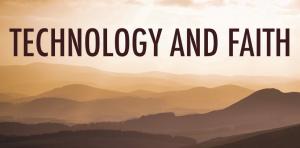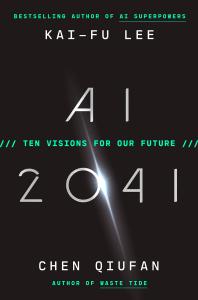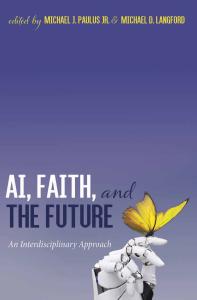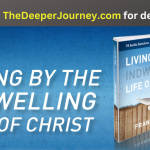
A few months ago, I attended a technology conference at which there was a talk about truth. The speaker, who was presenting a conceptual model for veracity, made a passing comment about the declining significance of religious authority. Living where and when I do, I’m accustomed to such assertions. But in this context, I found it difficult to move beyond it and have much confidence in anything the speaker had to say about truth.
After the talk, I approached him and suggested he consider nuancing his claim about the role of religious faith in people’s lives. But he doubled down on his hunch, citing a few recent examples of the declining political influence of religious institutions. I suggested he look at the Pew Research Center’s studies of religious affiliation—especially their global religious futures project, which projects that the number of religiously unaffiliated people is “expected to decrease as a share of the world’s population between 2010 and 2050 (from 16% to 13%).”
I showed him Pew’s “Global Religious Landscape” report on my phone, which found that “more than eight-in-ten people identify with a religious group.” Not liking the results, he wanted to question the research methodology and argue about the definition of religion. I encouraged him to explore Pew’s site, and pointed out that a large majority of the religious groups identified had been around for millennia.
The “end of religion” narrative that this speaker wanted to tell has largely fallen out of favor. Many social commentators, such as Jürgen Habermas, have moved from a negative to a more positive assessment of religion. It is surprising, therefore, how few people of faith—speaking explicitly as people of faith—are engaged in public ethical discussions about technology. Certainly there are a number engaging with the topic, but mostly they are speaking to and for their own communities. Few are present in public discussions about the social impacts of technology.
In The Myth of the Moral Brain, Harris Wiseman makes a statement about the role of faith traditions and institutions in discussions about moral enhancement, which can be applied more broadly to discussion about technology and technological enhancement:
Moral enhancement, in so far as it manifests, will do so in world where religious institutions and worldviews have power and tremendous reach. This alone should make things such that all commentators, secular and religious alike, those opposed to religious discourse as well as those in favor of it, should be interested in how moral enhancement is likely to be worked through in religious contexts. How will moral enhancement manifest in a world where the various faith traditions and their institutions have such a powerful voice? (140).
Bracketing out faith traditions from public discussions about technology ignores a significant dimension of most people’s lives—the lives of designers as well as users of technology.
Recently I attended a summit on the social impact of exponential technologies (“AI, machine learning, big data, internet of things, blockchain, etc.”). It was a fantastic and diverse gathering of people from industry, academia, and social service and government agencies—all concerned about social justice and equity, and how technology may be used for positive social transformation. While I was encouraged to hear—and learned much from—voices not typically represented at such conferences, faith communities were not represented in the discussion and the topic of religion did not come up.
As we think about the impact of technology, and more fundamentally on how it is changing our understanding of what it means to be human, it will become increasingly important to engage with wisdom drawn from religious traditions. In addition to representing ideas and practices that are core to the identities of so many, religion can contribute critical and constructive perspectives on technology.
One example is a critique of humanistic visions—especially those rooted in Enlightenment humanism—that presume a fundamental purity or the inevitable progress of human agency. People of faith want to improve the human condition (some even embrace the language of transhumanism), but typically do so with a humility acknowledging constraints and the corruptibility of human agency. We expect our visions of the future to be flawed. But we also believe we are not left to our devices to improve our frail, faulty, and finite condition.
Another example is a critique of individual autonomy. While religious commitments align with ethical principles such as beneficence and justice, they also provide distinctive approaches to other commonly accepted principles such as autonomy and nonmaleficence. Many religions seek to broaden a focus on autonomous individuals to include concerns for others and social transformation.
Since the advent of anticipatory religion thousands of years ago, religious sensibilities have sought a unity of spirit and matter in our selves and relationships to improve the world. Convictions of what’s wrong with the world—and what is needed to repair relationships with ourselves, others, nature, and the divine—lead to eschatological narratives that transcend human and natural agency.
Within Christianity, which is rooted in the understanding of new creation, the ultimate transformation of the world is represented in the technological image of the city. This is why so many Christians have been and are interested in how technology can improve our lives and world. But, with an understanding that new creation transforms a deformed creation, a Christian approach to technology acknowledges the limits and liabilities of human creations and agency.
I’m a founding member of AI and Faith, a group that aims to represent and bring perspective of “the world’s major religions into the emerging debate on the ethical development of Artificial Intelligence and related technologies.” We hosted an unconference last December and some of our members provided input and critical commentary on the recent Southern Baptist statement on AI. But we’re only getting started on what should be a much broader technological conversation and agenda for people of faith.
Where, and how, should representatives of faith traditions engage in these discussions?
















